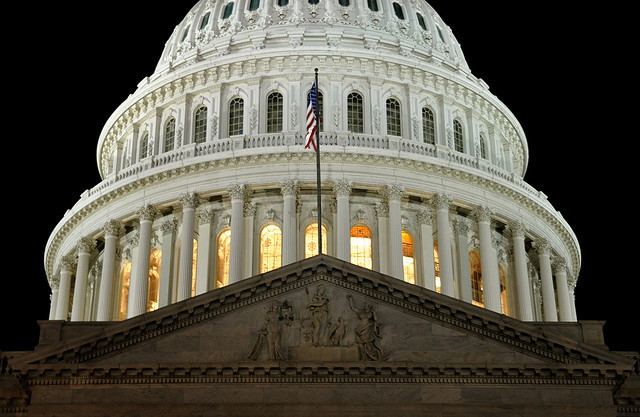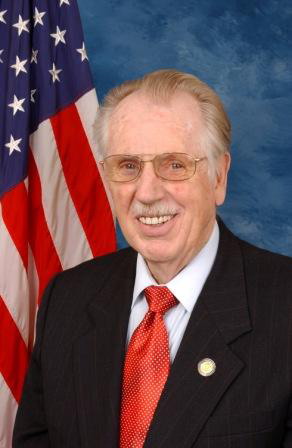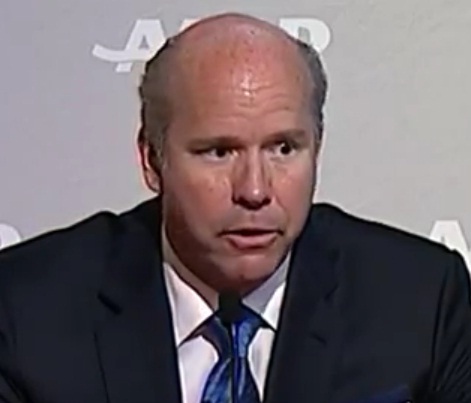Delaney out raised Bartlett in 6th District 2-to-1, but starts out even for the general; FEC questions Bartlett’s filings
 By Glynis Kazanjian
By Glynis Kazanjian
Glynis@marylandreporter.com
Even without the $1.7 million Democratic congressional candidate John Delaney loaned himself to defeat party establishment favorite Rob Garagiola, Delaney managed to raise twice as much money during the primary election as Republican incumbent Rep. Roscoe Bartlett, now his general election opponent.
But heading into the fall campaign, both candidates started with about $300,000 cash on hand. And Delaney’s campaign says the wealthy commercial banker from Potomac will not be financing himself, as he did for much of his primary expenses.
During the first quarter, Delaney raised $900,000 while Bartlett raised $460,000. Delaney got two-thirds of his money out of state, much of it from the banking and financial services sector in which he works. Delaney is founder and chairman of CapitalSource in Chevy Chase.
Ten-term congressman Bartlett got two-thirds of his cash from Maryland, and at least 38% of Bartlett’s first quarter contributions came from political action committees, while Delaney got less than 1% from PACs.
FEC questions Bartlett filings
Bartlett’s camp is also under fire from the Federal Election Commission for failing to provide adequate employment information on campaign contribution filings. Approximately half of Bartlett’s first quarter individual campaign contribution forms required further information.
The campaign also has been filing PAC contributions incorrectly, according to the FEC and a watchdog group.
Bartlett will face off against Delaney in November for the redrawn 6th Congressional District. After Democrats added Montgomery County Democrats and stripped some of its most Republican areas of Frederick and Carroll counties in redistricting, the race is the most hotly contested in Maryland. It is one GOP House Democrats hope to pick up to regain a majority in the U.S. House of Representatives.
Three independent analysts give Delaney the edge. The Rothenberg Political Report calls it “Democrat favored.” The Cook Political Report rates the race “likely Democratic,” and Larry Sabato’s Crystal Ball deems it “leans Democratic.”
Opponents of the map are currently trying to overturn the new map by collecting enough signatures to place it on the November ballot for a statewide vote.
In-state vs. out-of-state donors
According to FEC filings, two thirds (66%) of Bartlett’s individual campaign contributors were in-state. Individual contributions accounted for 50%, and PAC contributors accounted for approximately 38%.
“Congressman Bartlett is humbled by the outpouring of support he has received from people from all walks of life and is confident he will have the resources he needs to win in November,” Bartlett Campaign Manager Ted Dacey said.
Delaney raised approximately $800,000 from individual contributions, but two thirds came from out-of-state. Of that, $250,000, or 31%, came from three states: New York, California and Illinois. Contributions of $2,500 accounted for 46% of Delaney’s overall individual contributions.
“John believes this district needs an independent voice in Washington that will focus like a laser on creating jobs,” said Delaney Campaign Manager Justin Schall. “We’re proud to have the support of hundreds of individuals in and outside of the district so we don’t have to rely upon special interests to fund this campaign. Many of these people John has known and worked with for years.”
Industry Influences
Bartlett’s top three “industry” contributors were “defense aerospace, leadership PACs and retired individuals,” according to OpenSecrets.gov, a research arm of the Center for Responsive Government. Delaney’s top three contributor groups represented “securities and investment firms, finance and credit companies and lawyers and law firms.”
Bartlett’s top two contributors for the first quarter were conservative PACs Citizens United and Freedom Project, totaling $20,000. Delaney’s top two sources of contributions, amounting to $65,000, came from the banking and lobby sectors — CapitalSource Inc., Delaney’s own company, and Patton Boggs, Washington’s largest lobbying firm.
FEC demands data
According to data from OpenSecrets, 41% of Delaney’s individual contributors are associated with “industry” sectors, such as securities and investments, finance and credit, legal, lobbyists and business. However, nearly half (47%) of Bartlett’s individual contributors are unidentifiable due to missing information on FEC campaign finance disclosure forms.
On June 4, the FEC issued two letters to Bartlett Campaign Treasurer Robert Perry, requesting employment and occupation information for donors, as well as explanations for certain disbursements. The campaign has until July 7 to comply with the request before an audit or enforcement action is imposed.
“The campaign is working with our professional accounting firm to provide all of the additional information requested by the FEC,” Dacey said.
PAC contribution disparities for Bartlett’s campaign were also discovered on the FEC and OpenSecrets.org website. According to FEC filings, Bartlett’s campaign received around $175,000 in PAC contributions. Yet, the FEC and OpenSecrets websites both report total PAC contributions of 6%.
An FEC spokesperson said reports are filed electronically by the respective campaigns.
On the FEC financial summary page, PAC contributions are supposed to be filed under “Other Committees Contributions,” according to the FEC. However, all except one of Bartlett’s 2012 PAC contributions are filed under “Party Committees Contributions,” which typically lists contributions from political party committees.
“There seems to be a mix of committees in each of [the] categories,” an FEC spokesperson said. “Committee reports are posted as they are filed.”
OpenSecrets.org spokesperson Phillip Zanders had researchers check the FEC filings.
“According to our researchers, Rep. Bartlett is putting his PAC receipts on the wrong line of the FEC form, so they look they’re coming from parties and therefore included in our ‘other’ category,” Zanders wrote in an email. “Since we obtain this information directly from the Federal Election Commission, this could be best rectified by the FEC changing their data, which likely depends on Bartlett filing an amendment to correct the previous error.”
Bartlett’s campaign did not return requests for comment.
Delaney’s camp refrained from pouncing on the clerical errors. “We focus on filing our reports in an accurate manner,” Schall said.
Delaney won’t personally finance rest of campaign
Despite Delaney’s personal cash advantage, both campaigns started off the general on comparable financial footing. Bartlett had $266,689 cash on hand at the end of the first quarter, while Delaney had $316,550. And Schall, Delaney’s campaign manager, said Delaney is not planning to personally finance his campaign for the general.
“Those are not our plans,” Schall said. “We’re going to do it the old fashioned way. John plans on raising money like every other person running for Congress, one person at a time.”
Both candidates have been placed in their respective party’s national campaign election programs. Bartlett in the National Republican Congressional Committee’s Patriot program, geared toward protecting incumbents. Delaney is in the Democratic Congressional Campaign Committee’s Red to Blue program, which aims to knock off Republican incumbents.
Both designations are likely to attract outside money to the race.

MarylandReporter.com is a daily news website produced by journalists committed to making state government as open, transparent, accountable and responsive as possible – in deed, not just in promise. We believe the people who pay for this government are entitled to have their money spent in an efficient and effective way, and that they are entitled to keep as much of their hard-earned dollars as they possibly can.


